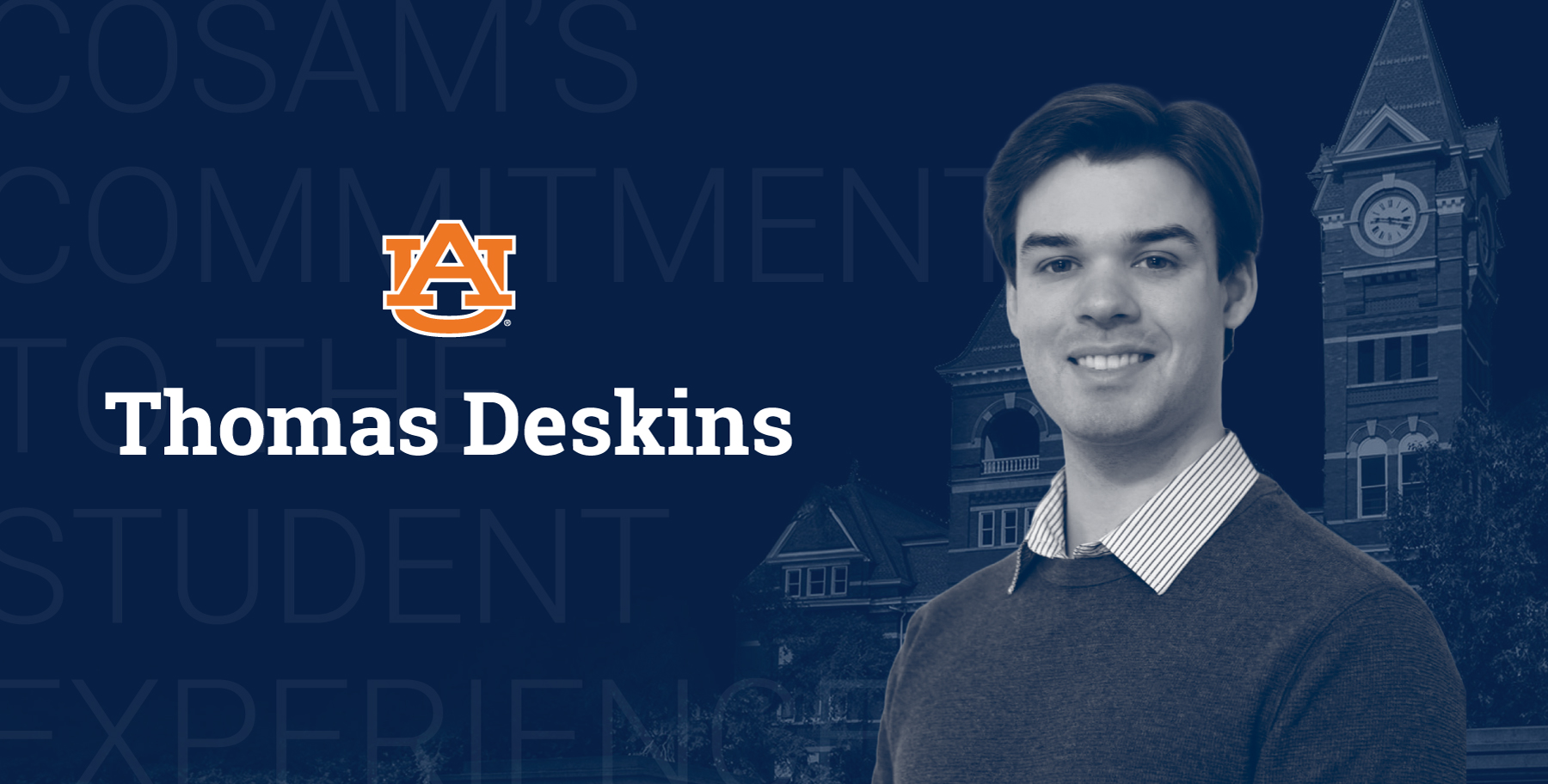Elevating the Student Experience – Thomas Deskins
When Thomas Deskins began Auburn University’s graduate program in physics 18 months ago, he did not imagine that he would so quickly join a research group and begin a career in astrophysics. In his first year, he passed all four parts of the graduate doctoral examination, familiarized himself with his group’s research, and wrote two proposals, one of which was recently approved by NASA, earning him time to use a telescope aboard the International Space Station (ISS).
“I am extremely proud that Thomas is going to be able to conduct research with equipment on the ISS,” explained associate professor Dennis Bodewits.
Deskins, who graduated with both his bachelor’s and master’s degrees in chemical engineering from the University of Maryland, College Park, has always pushed himself to gain new skills and to explore that which is unknown to him.
A month after graduating with his master’s, he moved to Beijing to work at an American international school, at which he taught science in English to middle school students. Deskins describes his time in China as an opportunity for introspection, during which he met many people with interesting lives, prompting him to contemplate how he wanted to lead his own.
His curiosity and desire to discover more about our unknown universe compelled Deskins to move more than 7,000 miles to Auburn to pursue a doctorate degree in physics.
“The coursework to earn a doctorate degree in physics is quite challenging,” Bodewits added. “Thomas rose to the challenge and now has the opportunity to be part of a rewarding research project.”
Deskins will conduct his research from Auburn using the Neutron star Interior Composition Explorer (NICER) telescope, a NASA X-ray telescope aboard the ISS, for a total time of 32 hours, spread out over several months. The telescope will observe two comets previously visited by spacecraft, 67P/Churyumov–Gerasimenko and 19P/Borrelly in October 2021 and January 2022.
Deskins will research interactions between the solar wind, a plasma emitted by the sun, and the two comets. He will compare his observations to past data from NASA’s Deep Space 1 spacecraft, which flew through comet Borrelly’s atmosphere in 2001, and the European Space Agency’s Rosetta spacecraft, which put a lander on comet 67P’s surface and orbited the comet for two years.
“The community and resources at Auburn University have allowed me to elevate my experience to work with equipment on the ISS,” Deskins said. “I am eternally grateful to the people of this wonderful institution and I am excited to see where this journey will take me.”
Latest Headlines
-
04/12/2024
-
04/02/2024
-
04/02/2024
-
04/02/2024
-
03/27/2024

